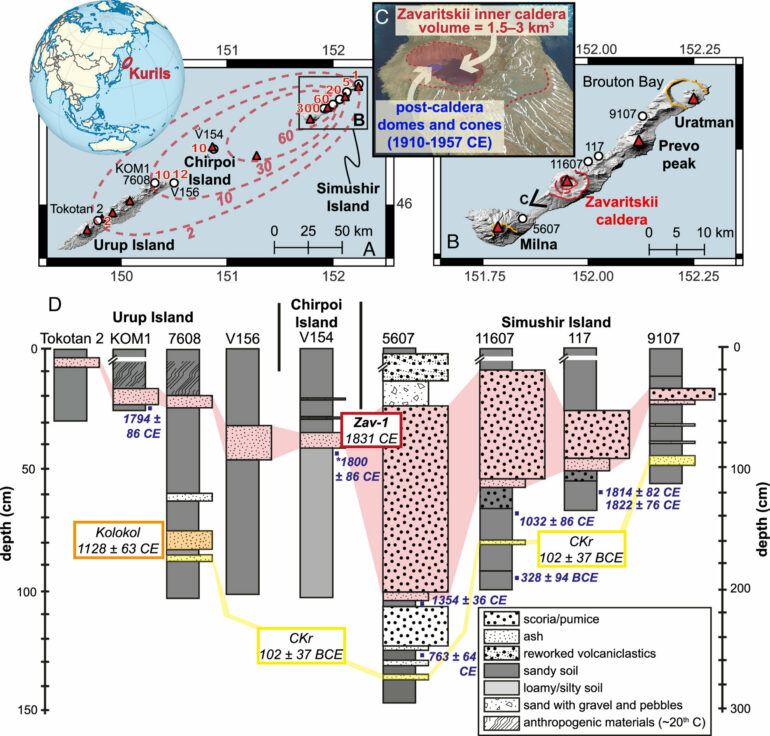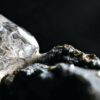The mystery location of a giant volcanic eruption that has puzzled scientists for almost 200 years has finally been solved, thanks to researchers from the University of St Andrews.
In 1831, a massive volcanic eruption spewed sulfurous gases into the atmosphere, reflecting sunlight and causing a global cooling of approximately 1°C. This cold weather, well-documented worldwide, led to widespread crop failures and devastating famines.
The composer Felix Mendelssohn even wrote about the catastrophic weather during his summer journey through the Alps in 1831: “Desolate weather, it has rained again all night and all morning, it is as cold as in winter, there is already deep snow on the nearest hills…”
The eruption in 1831 is Earth’s most recent “mystery eruption.” While scientists knew it was a major event that caused climatic change and societal upheaval, the identity of the volcano responsible remained unknown and fiercely debated, until now.
New research, led by Dr. Will Hutchison from the School of Earth and Environmental Science at the University of St Andrews, and published in the journal Proceedings of the National Academy of Sciences on December 30, reveals how the team analyzed ice core records from the 1831 event and identified a “perfect fingerprint match” of the ash deposits.
“Only in recent years have we developed the ability to extract microscopic ash shards from polar ice cores and conduct detailed chemical analyses on them. These shards are incredibly minute, roughly one-tenth the diameter of a human hair,” explained Dr. Hutchison.
Dr. Hutchison and his team were able to accurately date and match the ice core deposits to Zavaritskii volcano on the remote, uninhabited island of Simushir, part of the Kuril Islands. The islands are a disputed territory between Russia and Japan. Currently controlled by Russia, they operate as a strategic military outpost. During the Cold War, in a plotline reminiscent of a Bond film, the Soviets used Simushir as a secret nuclear submarine base, docking vessels in a flooded volcanic crater.
“We analyzed the chemistry of the ice at a very high temporal resolution. This allowed us to pinpoint the precise timing of the eruption to spring-summer 1831, confirm that it was highly explosive, and then extract the tiny shards of ash. Finding the match took a long time and required extensive collaboration with colleagues from Japan and Russia, who sent us samples collected from these remote volcanoes decades ago.
“The moment in the lab when we analyzed the two ashes together, one from the volcano and one from the ice core, was a genuine eureka moment. I couldn’t believe the numbers were identical. After this, I spent a lot of time delving into the age and size of the eruption in Kuril records to truly convince myself that the match was real.”
This work highlights the Kuril Islands as a poorly studied yet extremely productive volcanic region.
The volcano responsible for the 1831 eruption was very remote, yet it had a significant global impact on climate and severe consequences for human populations. Identifying the sources of these mystery eruptions is crucial, as it allows scientists to map and monitor the regions on Earth most likely to produce climate-altering volcanic events.
Dr. Hutchison added, “There are so many volcanoes like this, which highlights how difficult it will be to predict when or where the next large-magnitude eruption might occur.
“As scientists and as a society, we need to consider how to coordinate an international response when the next large eruption, like the one in 1831, happens.”
More information:
William Hutchison et al, The 1831 CE mystery eruption identified as Zavaritskii caldera, Simushir Island (Kurils), Proceedings of the National Academy of Sciences (2024). DOI: 10.1073/pnas.2416699122
Provided by
University of St Andrews
Citation:
Researchers solve 200-year-old volcanic mystery (2025, January 2)



